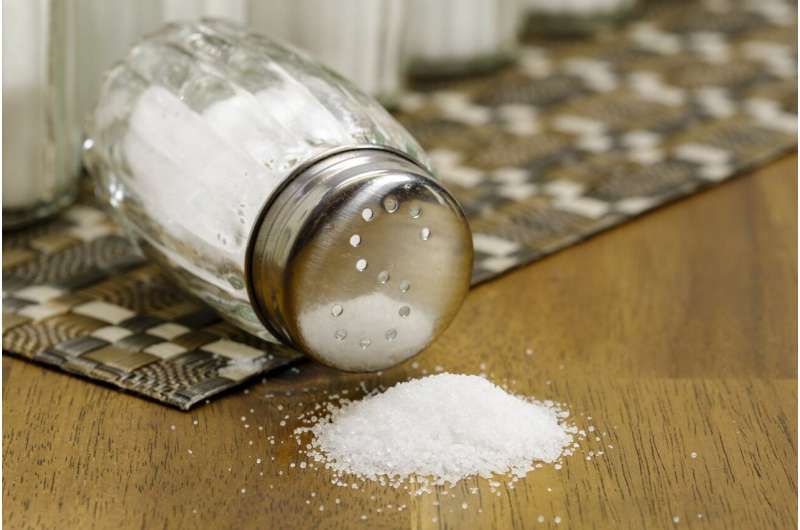zyrtec childrens dosage weight


A new study published in the Bulletin of the World Health Organization has found that pre-packaged food now contributes nearly one-third of population’s sodium intake in China and proposes setting a 20% sodium reduction target to reduce diet-related disease and deaths.
Professor Puhong Zhang, associate director at The George Institute for Global Health, China and lead author said that while the Chinese Government’s national salt reduction programs targeting catering and family chefs had led to a markedly reduced household salt use, the 11g/d population salt intake is still more than twice that recommended by the WHO (<5g/d).
“Strategies to promote food reformulation for sodium reduction now need to be strengthened, as our study has shown that the contribution of pre-packaged food contributes to salt intake has grown and its market share is increasing,” he said.
“Considering that harnessing the food industry’s capacity to reduce salt in its products is much easier and more sustainable than changing people’s cooking and dietary behavior, paxil cr embarazo we strongly suggest deepening action on salt by simultaneously implementing sodium target-setting in China.”
To explore how to set suitable maximum sodium targets for pre-packaged foods in China, researchers from the Chinese Center for Disease Control and Prevention, The George Institute for Global Health, Queen Mary University of London, and the World Health Organization (WHO) linked nutrition data from 51,803 pre-packaged food products with food consumption data from 15,670 Chinese adults and recategorized products based on an adapted version of the WHO framework. They then analyzed the sodium content of pre-packaged foods, their contribution to population sodium intake and the potential impact of various target-setting designs on sodium reduction in China.
The results show that pre-packaged foods contribute a sodium intake of 1302.5 mg/d (3.3 g salt) among adults, accounting for 30.1% of population’s sodium intake in China. Soy sauce and fish sauce contributed most to sodium intake, followed by ready-to-eat meals and salted butter and spreads.
Setting maximum sodium targets for pre-packaged foods is an effective strategy to reduce salt intake and has been adopted by around 65 countries to date. To further accelerate the uptake of this policy among its member countries, the WHO developed global sodium benchmarks for various foods in 2021. However, this target-setting policy has not yet been officially enacted in China, mainly due to the lack of robust and reasonable sodium targets.
The researchers calculated that if all products in China met the WHO global sodium benchmarks, the sodium intake from pre-packaged food would be reduced by 701.2 mg/d, accounting for a 13.9% reduction in population sodium intake.
However, they proposed a set of revised 20%-reduction targets as the most suitable for initial use in China which could achieve a substantial and acceptable reduction in sodium for most subcategories. The revised 20%-reduction targets would lead to a sodium reduction by 305 mg/d and 6.1% population sodium reduction in China, a significant step towards achieving the national goal of reducing sodium intake by 20% by 2030. Moreover, the revised 20%-reduction targets could be gradually lowered towards the WHO benchmarks in the longer term.
Professor Huijun Wang, National Institute for Nutrition and Health, Chinese Center for Disease Control and Prevention and corresponding author said that improving the nutrition laws, policies and standards has always been a priority of the National Nutrition Plan in China.
“Global experience has proved that harnessing industry to reformulate food products through target-setting is a key solution to lower the sodium intake from pre-packaged foods,” she said.
“To start with the policy in China, the revised 20%-reduction targets could be a good choice because these targets can help push the reformulation of products with relatively high sodium content and guarantee substantial sodium content reduction which may not be noticed by consumers and should be acceptable by most companies.”
This study provides robust evidence and reasonable sodium targets for China to accelerate its actions for reducing population sodium intake through reformulating pre-packaged foods. In China excessive sodium intake led to 1.7 million deaths in 2017. If the proposed targets could be met and sustained until 2030, 6 million CVD events could be prevented.
Professor Gangqiang Ding, Director, National Institute for Nutrition and Health, Chinese Center for Disease Control and Prevention and author said that to achieve the national goal, a dual approach to salt reduction strategies was needed.
“This study provided a scientific reference for government to launch a sodium target-setting policy in China. However, simultaneous implementation of such sodium targets and other strategies targeting discretionary salt use including added salt during cooking and at the table are strongly recommended.”
More information:
Puhong Zhang et al, Sodium content targets for pre-packaged foods, China: a quantitative study and proposal, Bulletin of the World Health Organization (2023). DOI: 10.2471/BLT.23.289992
Journal information:
Bulletin of the World Health Organization
Source: Read Full Article